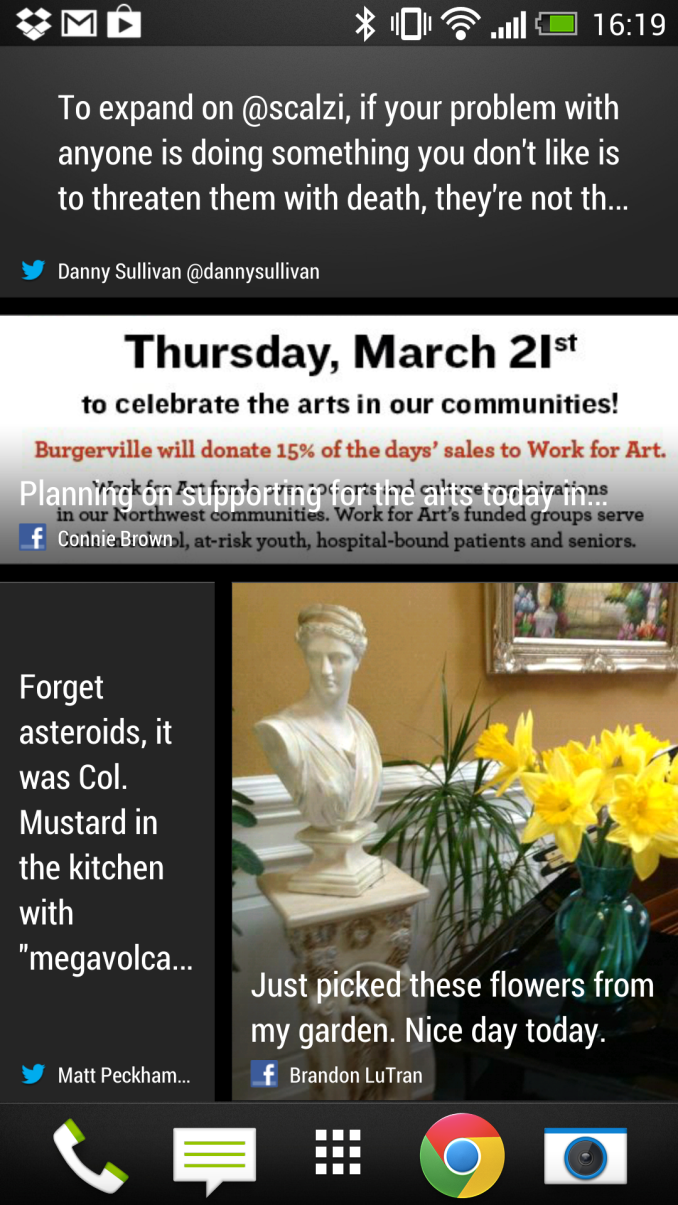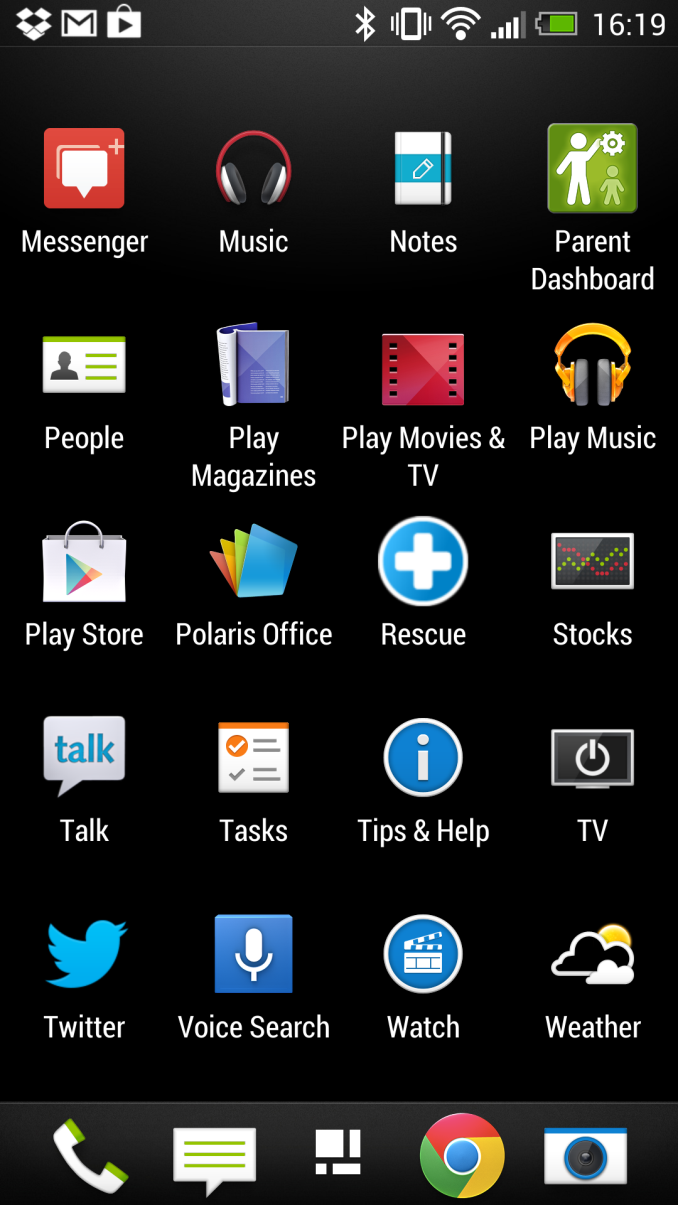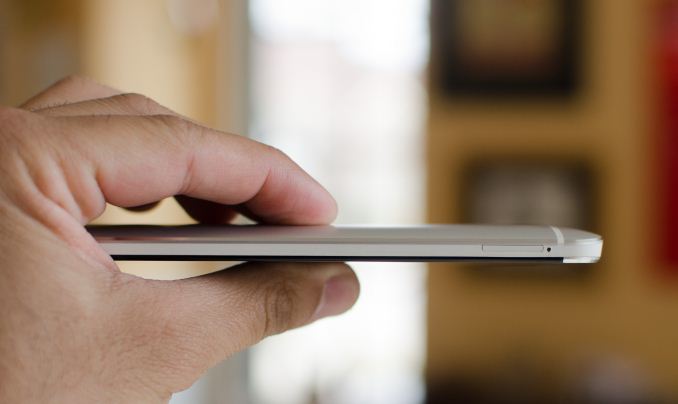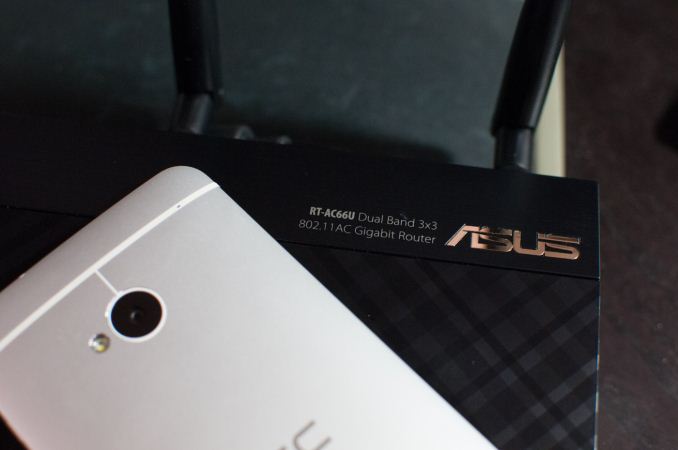The HTC One: A Remarkable Device, Anand’s mini Review
by Anand Lal Shimpi on March 21, 2013 4:49 PM EST- Posted in
- Smartphones
- HTC
- Mobile
- HTC One
Android/Sense
The One ships with Sense 5.0, and I have to say that the latest version of Sense is really the first custom Android skin that I don’t mind. I’m not sold on Blinkfeed, the default homescreen that allows you to aggregate content from multiple web sources as well as Twitter and Facebook, but thankfully you can easily change that default to something more traditionally Android.
With Sense 5.0 HTC dramatically reduced the presence of widgets on the default home screen. Other than the Blinkfeed screen, there’s only a single home screen by default and the only widget on that screen is a Google search box. You can obviously add all of the widgets you want, but this is a noticeable departure from HTC’s strategy in the past. To be honest, it’s a lot cleaner.
Sense 5.0 isn’t intrusive, and the work HTC has done in the gallery app sort of make the customizations worth it (more on this later). Even the default pre-load of apps is very sensible.
Thanks to the underlying use of Android 4.1.2 combined with the fast Snapdragon 600 SoC, UI frame rate is incredibly smooth. Some interactions are still not perfect (e.g. zooming in Google Maps) but the overall experience is very polished and very fast.
Performance & Battery Life
The One is the first Snapdragon 600 based smartphone that I’ve used regularly. For those who aren’t familiar with Qualcomm’s latest branding change, Snapdragon 600 refers to a quad-core Krait 300 based SoC with Adreno 320 graphics (APQ8064T). The SoC still uses the same 28nm LP process as the previous quad-core flagship (APQ8064), but clocks are a bit higher (1.7GHz in the One, 1.9GHz in the Galaxy S 4).
GPU clocks appear unchanged, which is contrary to what I was told at the launch of Krait 300 but it’s entirely possible that we’ll see implementation with higher GPU clocks.
Performance, as I mentioned before, is very good. Even the speed of the NAND HTC used in the device is among the best I’ve seen in Android devices. We’re still not yet at the point where I believe smartphone SoC performance is good enough, but at least we won’t see a huge jump in SoC performance (at similar power) until the move to 20nm in mid to late 2014.
The impact of all of this on battery life, as always, depends on your usage model. I’ve been using the international One on AT&T, and 3G battery life is comparable to the iPhone 5 on the same network (non-LTE) at identical brightness levels. I have yet to see what the difference will be like with LTE enabled.
Obviously with four cores and a larger, higher resolution display, the One definitely has the ability to draw more power than the iPhone 5. Keep the cores more active and/or drive the display at very high brightness levels and you’ll see worse battery life. For the past couple of years I’ve been talking about the increase in dynamic range when it comes to smartphone battery life, the One is no different in this regard. Brian will have a full rundown of battery life data on the One in his review.
Other Frills: Of Big Screens and Usability
For me, the iPhone 5’s display is a little too small, and the One is probably a little too big. I think I agree with Brian here in that the ideal display size is somewhere around 4.3”. That being said, I find both devices (the 5 and the One) to be comfortably usable. The 5 is better for one handed use, while the One is better for actually consuming web content. In pocket, the One is thin enough to not be a problem.
Although it’s probably a bit overkill, I am pleased with the move to 1080p across all of the high end Android smartphones. The One’s display looks excellent and lacks the oversaturated colors of the alternative AMOLED displays.
The One also features stereo speakers that get impressively loud (louder than any other smartphone I’ve used, by a considerable margin). I keep my phone on silent all the time but when showing others highlights reels, the One’s loud stereo speakers definitely come in handy.
The final element of the One that I’m really happy about is the integration of 802.11ac support. The One is good for WiFi speeds of up to 275Mbps (that’s actually tested, not theoretical).














434 Comments
View All Comments
evonitzer - Friday, March 22, 2013 - link
I was thinking the same thing. 1280x720 = 340ppi in 4.3 inches. Back it up with some decent hardware and I think we'd have a winner. Perhaps they could go the Nokia route with their cheap phones and make it thicker and plastic (and maybe crazy removable backs?) so we could see if people really are interested in a thicker phone with good innards. Price it like the Nexus 4, and I would snap it up in a heartbeat.Mook1e - Friday, March 22, 2013 - link
I'm just going to post two anecdotes with regards to both removable batteries and microsd storage.Let me caveat my statements by admitting I own a Galaxy Note 2 and am an advocate for both features.
I was recently working with someone who had 2 iphones on Verizon simply so that he could have double the battery life. He didn't use an external charger, but instead called Verizon and deactivated and then activated the iphones when the battery died on his first phone! Ridiculous.
I always carry two batteries for my phone, even though the Note 2 lasts 2 days with moderate use. I've just gotten into the habit and it's great to have the simple option if I am away from power unexpectedly.
I was also recently snowboarding in Keystone, Colorado using my Note 2 for music and a GoPro to record my runs.
I had purchased a 64GB microsd for the Note 2 and a 16GB microsd (with sdcard adapter) for the GoPro. I would swap the chips and watch my runs on the gondola back up to the top of the mountain. Needless to say, the glorious huge screen (even though not fullhd) of the Note 2 and the fact I was even able to swap cards was awesome, and numerous fellow gondola riders stated the same when I did it.
These incidences have only happened in the last 2 WEEKS and they perfectly demonstrate the flexibility you have with those two simple design choices.
One more thing about this mini review.. why is it every other review/preview of the One and S4 has indicated that while the One has good low-light camera performance, overall its camera is of lower quality to the S4/Z chip and S4 software? Just wondering.
Death666Angel - Friday, March 22, 2013 - link
To your last point: Anand did state:"In well lit outdoor scenes the One’s camera does a reasonable job (although HTC seems to have an issue with noise in these well lit scenes from whatever processing they seem to be doing)"
Which shows that he thinks that in that scenario, it is only par for the job or even below par. And I don't think he has a G4 to compare with, hence no comparison to that. :)
Mook1e - Friday, March 22, 2013 - link
That's all well and good, but in his S4 comparison he implies the One has better camera quality versus the S4's list of features. Better low-light quality, but arguably worse quality overall.Can we have some honesty, please?
phillyry - Tuesday, March 26, 2013 - link
Mook1e,Try listening to the podcasts and/or reading Brian's article on optics - that's what's biased Anand. He respects Brian's knowledge and understanding of optics and smartphone cameras and is likely placing some faith in Brian's assertion that the One is going in the right direction when it comes to smartphone cameras.
nerd1 - Tuesday, March 26, 2013 - link
Actual sample pics says elsewise.Mook1e - Friday, March 22, 2013 - link
I'm just going to post two anecdotes with regards to both removable batteries and microsd storage.Let me caveat my statements by admitting I own a Galaxy Note 2 and am an advocate for both features.
I was recently working with someone who had 2 iphones on Verizon simply so that he could have double the battery life. He didn't use an external charger, but instead called Verizon and deactivated and then activated the iphones when the battery died on his first phone! Ridiculous.
I always carry two batteries for my phone, even though the Note 2 lasts 2 days with moderate use. I've just gotten into the habit and it's great to have the simple option if I am away from power unexpectedly.
I was also recently snowboarding in Keystone, Colorado using my Note 2 for music and a GoPro to record my runs.
I had purchased a 64GB microsd for the Note 2 and a 16GB microsd (with sdcard adapter) for the GoPro. I would swap the chips and watch my runs on the gondola back up to the top of the mountain. Needless to say, the glorious huge screen (even though not fullhd) of the Note 2 and the fact I was even able to swap cards was awesome, and numerous fellow gondola riders stated the same when I did it.
These incidences have only happened in the last 2 WEEKS and they perfectly demonstrate the flexibility you have with those two simple design choices.
One more thing about this mini review.. why is it every other review/preview of the One and S4 has indicated that while the One has good low-light camera performance, overall its camera is of lower quality to the S4/Z chip and S4 software? Just wondering.
name99 - Friday, March 22, 2013 - link
"For what it’s worth, if I had to estimate I’d say design work on the One probably started before the iPhone 4S came out."I don't know about that. The champfering, in particular, seems so much an iPhone5 design cue that isn't forced by the overall design concept. But that's not what I want to discuss.
What I find interesting here is the question of how much profit HTC makes on these devices, which I suspect are crazy expensive to make. My larger thinking is based on the question of: "how is Apple competing", a question that is constantly answered on the internet by reference to what Apple was doing 18 months ago rather than what Apple is doing today, let alone next year.
At first Apple competed on the basis simply of having a smartphone that actually was a smartphone, not a piece of crap like every competitor.
This persisted until Android became at least marginally viable (around 2.2 or so) at which point the competition shifted to screen quality. This was the basis of competition for two years or so until Apple's exclusivity contracts ran out, or perhaps until competitors managed to retool for retina displays.
Both of these features (OS quality and screen quality) remain Apple selling points, and Apple fanatics will point out ways in which they remain superior; but their superiority is now a matter of degrees and opinion, not the qualitative difference of before.
So what's the new basis for competition. I submit that it is build quality. The iPhone5 is a truly astonishing device to hold. The iPhone1 (and 3G and 3GS) had really obvious seams and edges; even the iPhone 4 and 4S had noticeable edges. But the 5 seems like it is almost organically grown in its perfection. And so it provides an answer to the question "Why should I pay more for an iPhone".
Samsung does not (as far as I can tell) appear interested in competing along this dimension. (Whatever other people have said about SGS4, they have not raved about its build quality as something new.) This may be because they haven't had time to retool; or it may be that Samsung simply appreciate that their customers are not willing to pay for this --- there's no shame in selling a Honda Civic at Honda Civic prices, the only shame is pretending your Civic is a Mercedes.
HTC, on the other hand, seem to have decided this is a space in which they want to compete; and at least from the photos they seem to have succeeded --- I haven't seen one in real life, so don't know if there are non-obvious problems. This may make sense for them, catering to the Android-loving set who are willing to pay more (BMW to Apple's Mercedes); but it all hinges on whether they can make a profit. Apple have invested (we know this from a variety of clues) a MASSIVE amount, like billions of dollars, in tooling and in learning over the years, to get to the point where they can make an iPhone5, sell it at the price they do, and make a profit.
It's not clear to me that HTC can make the economics work in the same way.
Which is a shame --- high-end competition for Apple benefits us all; but if I had to bet, my betting would be on HTC going broke over this, not on it saving HTC. I expect the end-game will be some sort of merger --- MAYBE Samsung buying HTC, but more likely either one of the Taiwan computer companies or maybe nVidia.
haze4peace - Sunday, March 24, 2013 - link
Hey thanks for the insightful post.nerd1 - Tuesday, March 26, 2013 - link
CNC machining has been around for decades and it does not cost that much ($2-$3 i guess)And apple havent invested anything to improve cnc technology either. Literally anyone can uae machine if they are willing to do - see nokia, htc, and even samsung (their series 9 laptop has cnc unibody)
Also apple has way higher margin than even samsung who makes most parts in house. All other OEMs uses obviously better display, larger ram, better ap, larger battery... Apple products are not BMW, they are polished civics with BMW prices.